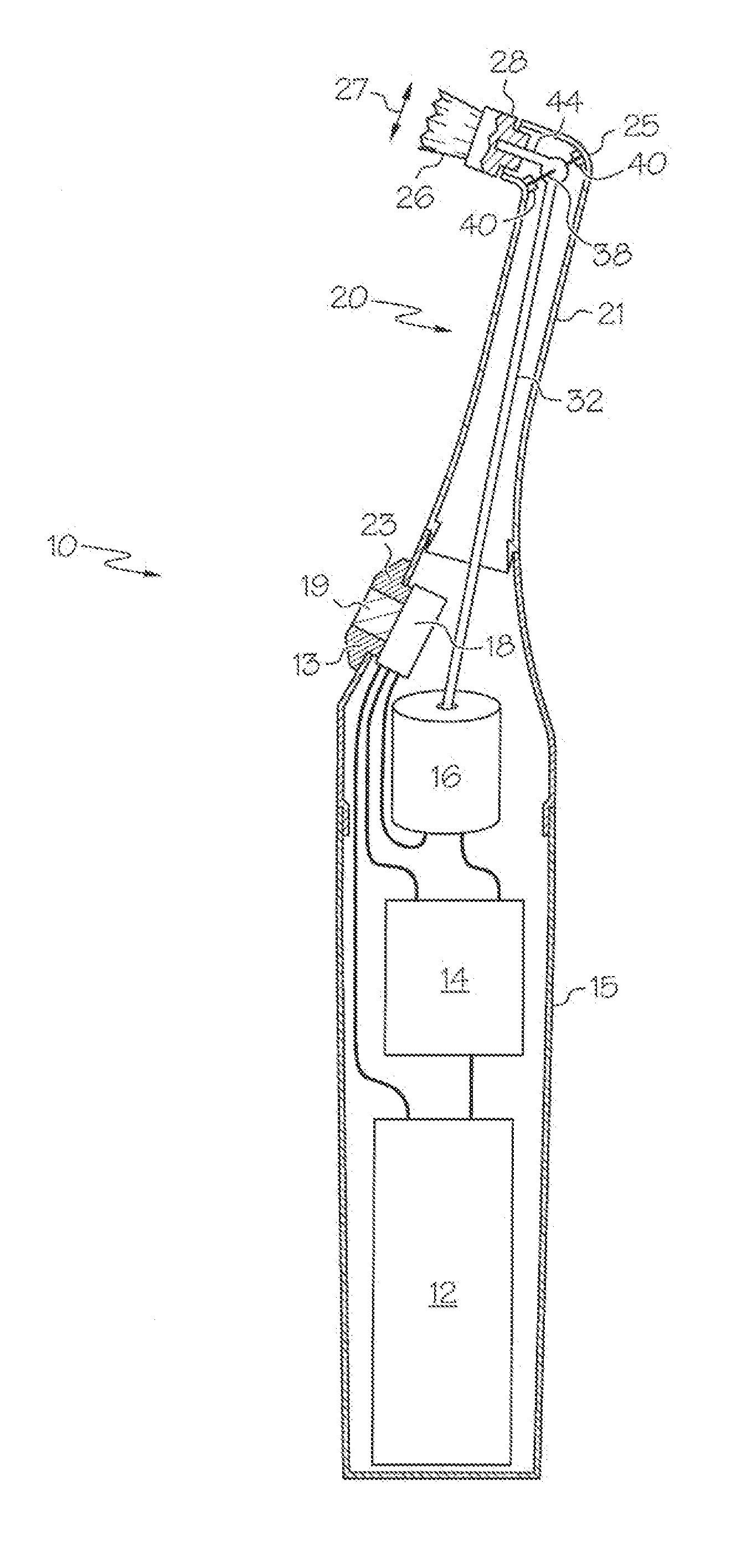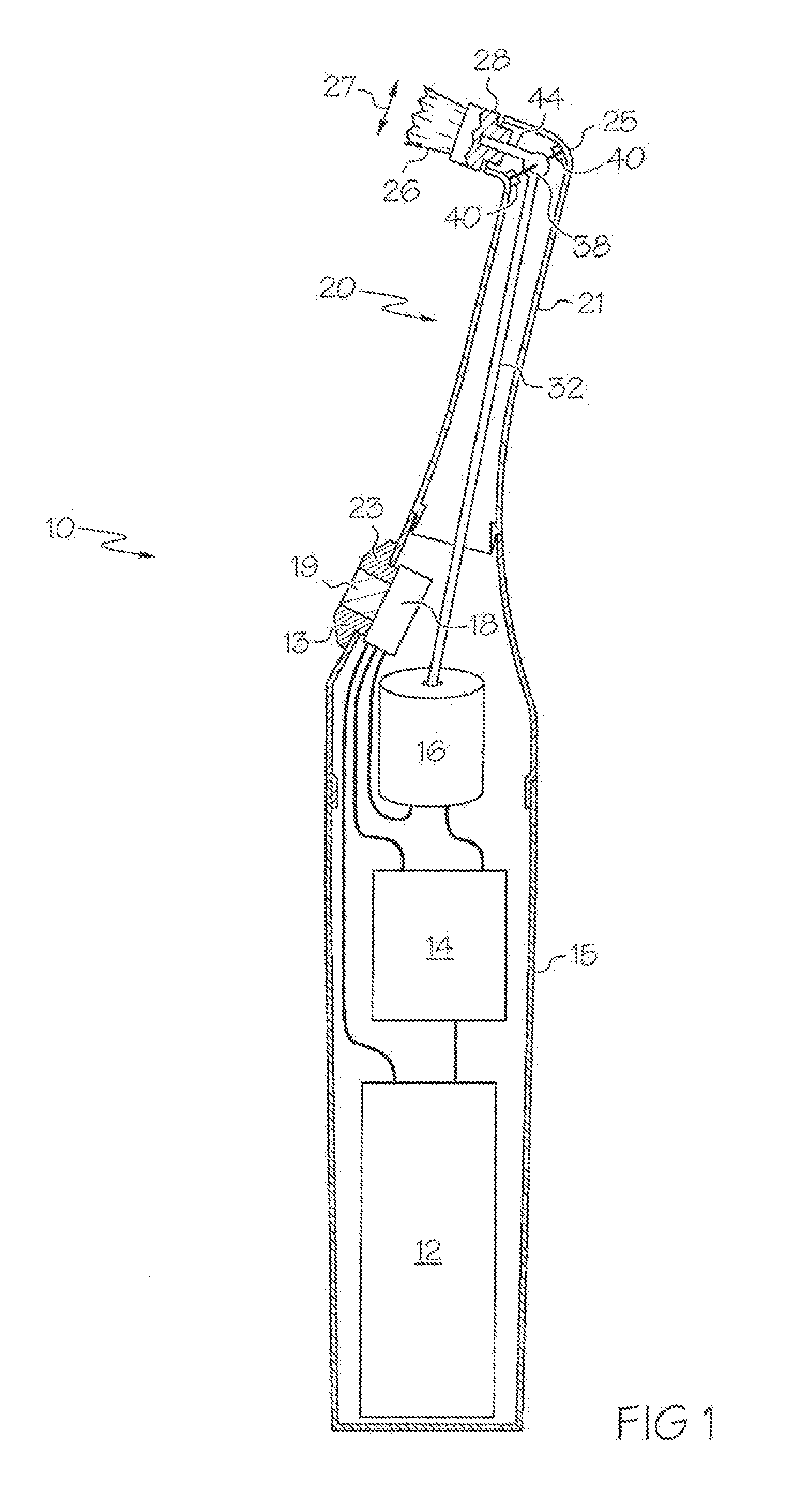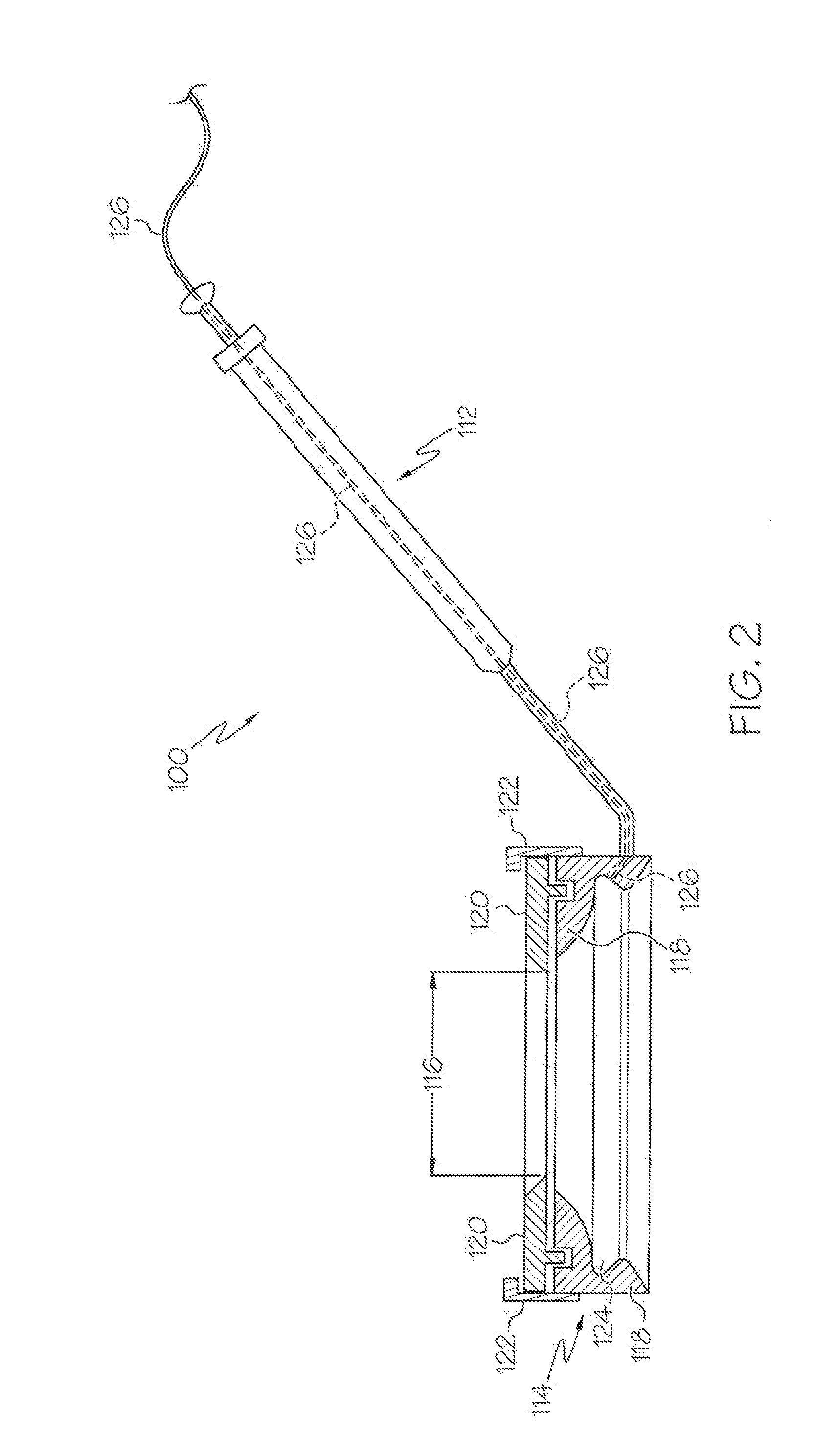Ophthalmic treatment apparatus
a technology for ophthalmology and ophthalmology, which is applied in the field of ophthalmology treatment apparatus, can solve the problems of inability to achieve the effect of removing corneal epithelium, nicks and cuts, and delayed improvement of visual acuity, and achieves the effect of facilitating the removal of corneal epithelium and facilitating the dissection of corneal epithelium
- Summary
- Abstract
- Description
- Claims
- Application Information
AI Technical Summary
Benefits of technology
Problems solved by technology
Method used
Image
Examples
Embodiment Construction
Definitions
[0020]As used herein, the terms “ultrasound” or “ultrasonic” refer to sound of a frequency higher than, and outside of, the audible range of the human ear. The ultrasound frequency range generally begins at a minimum frequency range of between about 15,000 to about 20,000 cycles per second (cps), or hertz (Hz).
[0021]The term “sonic” refers to sound of a frequency that is within the audible range of the human ear, i.e. roughly between 20 Hz to about 20,000 Hz, although the range of frequencies individuals hear can be greatly influenced by environmental factors. Frequencies below 20 Hz are generally felt rather than heard, assuming the amplitude of the vibration is great enough. High frequencies (i.e. between about 15,000 Hz to about 20,000 Hz) are the first to be affected by hearing loss due to age and / or prolonged exposure to very laud noises. That is, a newborn baby can hear up to about 20,000 Hz, but very few adults can. Adult hearing stops somewhere in the range of bet...
PUM
 Login to View More
Login to View More Abstract
Description
Claims
Application Information
 Login to View More
Login to View More - R&D
- Intellectual Property
- Life Sciences
- Materials
- Tech Scout
- Unparalleled Data Quality
- Higher Quality Content
- 60% Fewer Hallucinations
Browse by: Latest US Patents, China's latest patents, Technical Efficacy Thesaurus, Application Domain, Technology Topic, Popular Technical Reports.
© 2025 PatSnap. All rights reserved.Legal|Privacy policy|Modern Slavery Act Transparency Statement|Sitemap|About US| Contact US: help@patsnap.com



